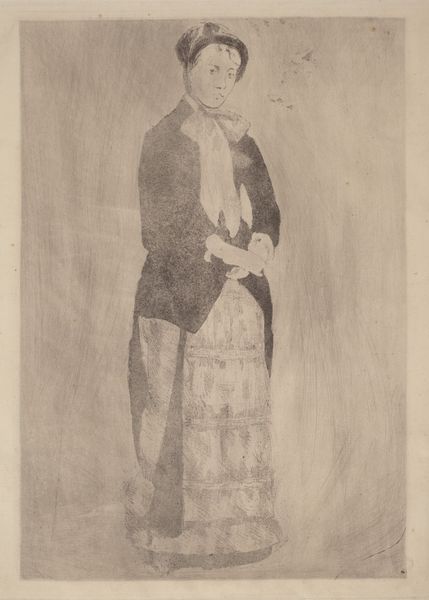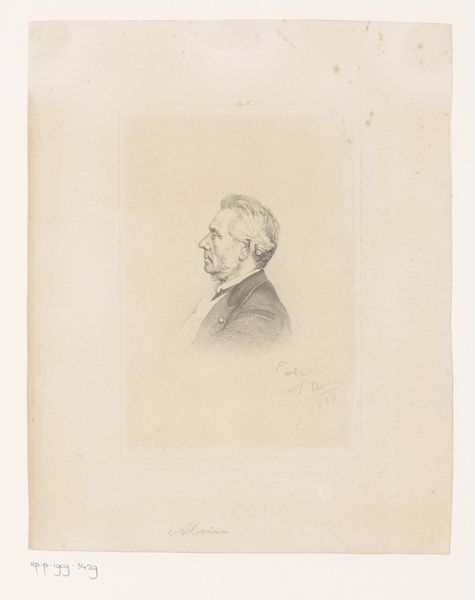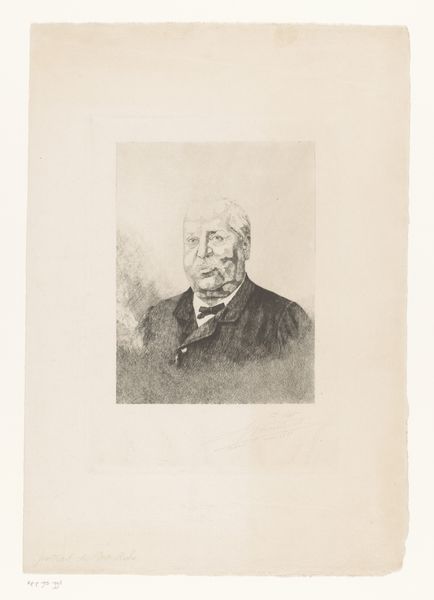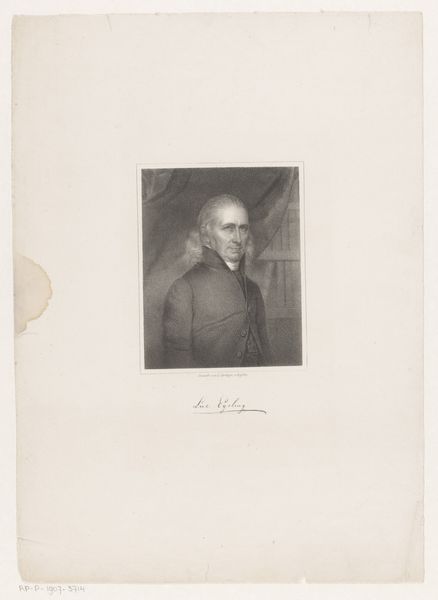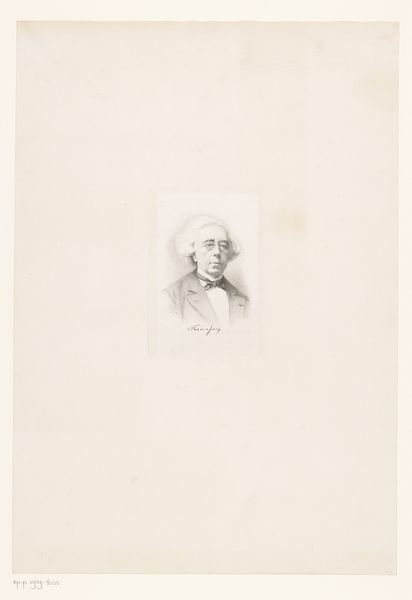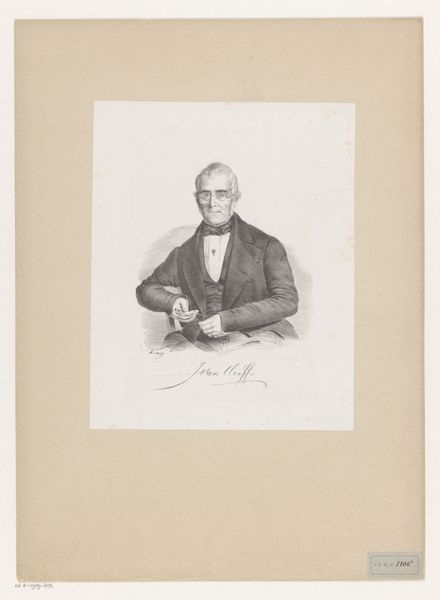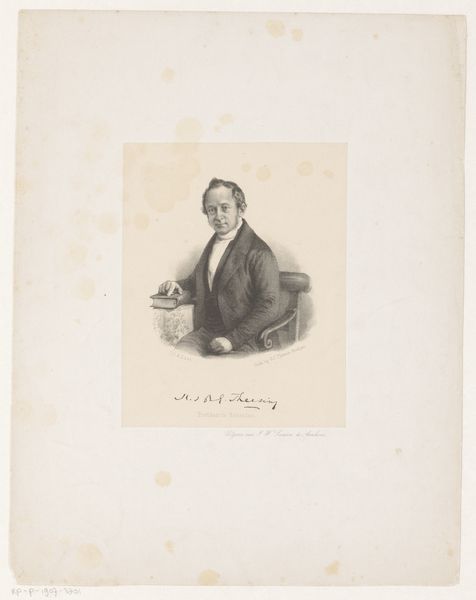
drawing, paper, pencil
#
portrait
#
pencil drawn
#
drawing
#
toned paper
#
light pencil work
#
pencil sketch
#
paper
#
pencil
#
pencil work
#
academic-art
Dimensions: height 252 mm, width 183 mm
Copyright: Rijks Museum: Open Domain
Curator: This is Johannes de Koning's "Portret van Pieter Pické", created in 1802 using pencil on paper. Editor: It's remarkably serene. The limited tonal range creates a quiet, almost contemplative mood, even though the man is actively drawing at his table. Curator: Yes, de Koning really showcases the art of drawing itself here. Notice how he renders the fabric of Pické’s coat with subtle variations in pencil pressure, a real testament to the artist's command of the medium. This was likely not just about representing Pické, but also displaying Koning's own skill and labor. Editor: I’m intrigued by how the act of portraiture serves as a status symbol here, both for the subject and the artist. How was de Koning positioned within the artistic landscape of his time? Was this commissioned work? What would a portrait like this signify for both parties involved? Curator: De Koning was part of a larger artistic network in the Netherlands. Commissioned works like this offered artists avenues for social mobility and allowed the sitter to solidify his position within society through the display of taste and patronage. Consider the labor that goes into creating a likeness. A finely wrought piece of material culture such as this was indicative of social capital, both embodied in the figure portrayed and secured by his patronage of the arts. Editor: That resonates when looking at the precision. He is portrayed as active in artistic labour too. The sitter actively works. The act of depicting oneself this way seems highly self-aware. Was it common to show a professional with tools visible like that? It almost demystifies the creative process. Curator: It would humanise the sitter, yet still within the bounds of respectable depiction. These glimpses into working life were being romanticised throughout artistic and philosophical circles. Think of the French encyclopedists with the beautiful etchings representing labour processes... Editor: This adds another dimension to viewing. De Koning's skill, the labour embodied, its reception, and the message. It provides a more detailed, almost material understanding, rather than purely art historical perspective. Curator: Absolutely. Context shapes the physical forms and the understanding of such art. Editor: Indeed, considering social frameworks provides another interesting angle of this artwork.
Comments
No comments
Be the first to comment and join the conversation on the ultimate creative platform.
